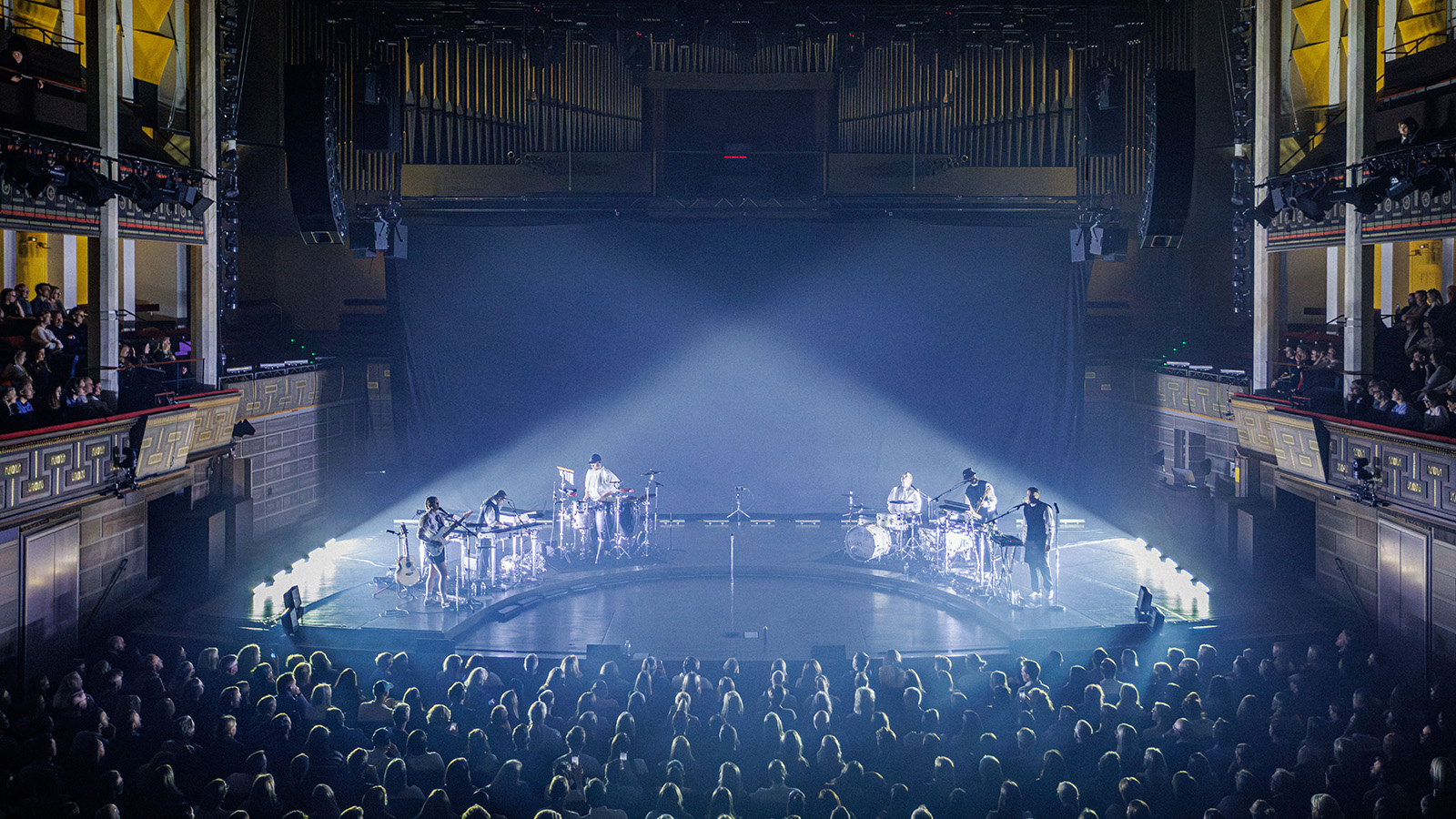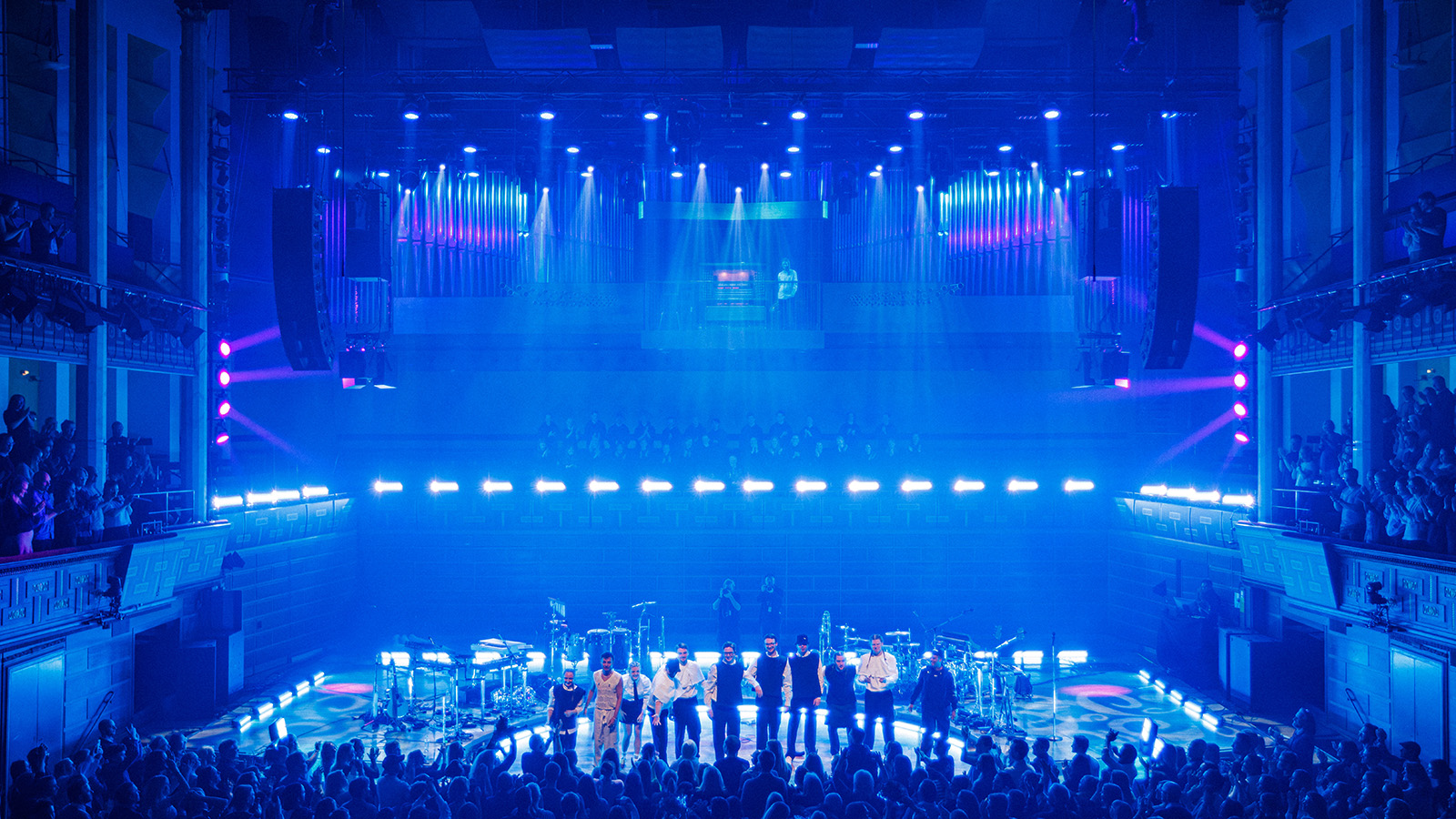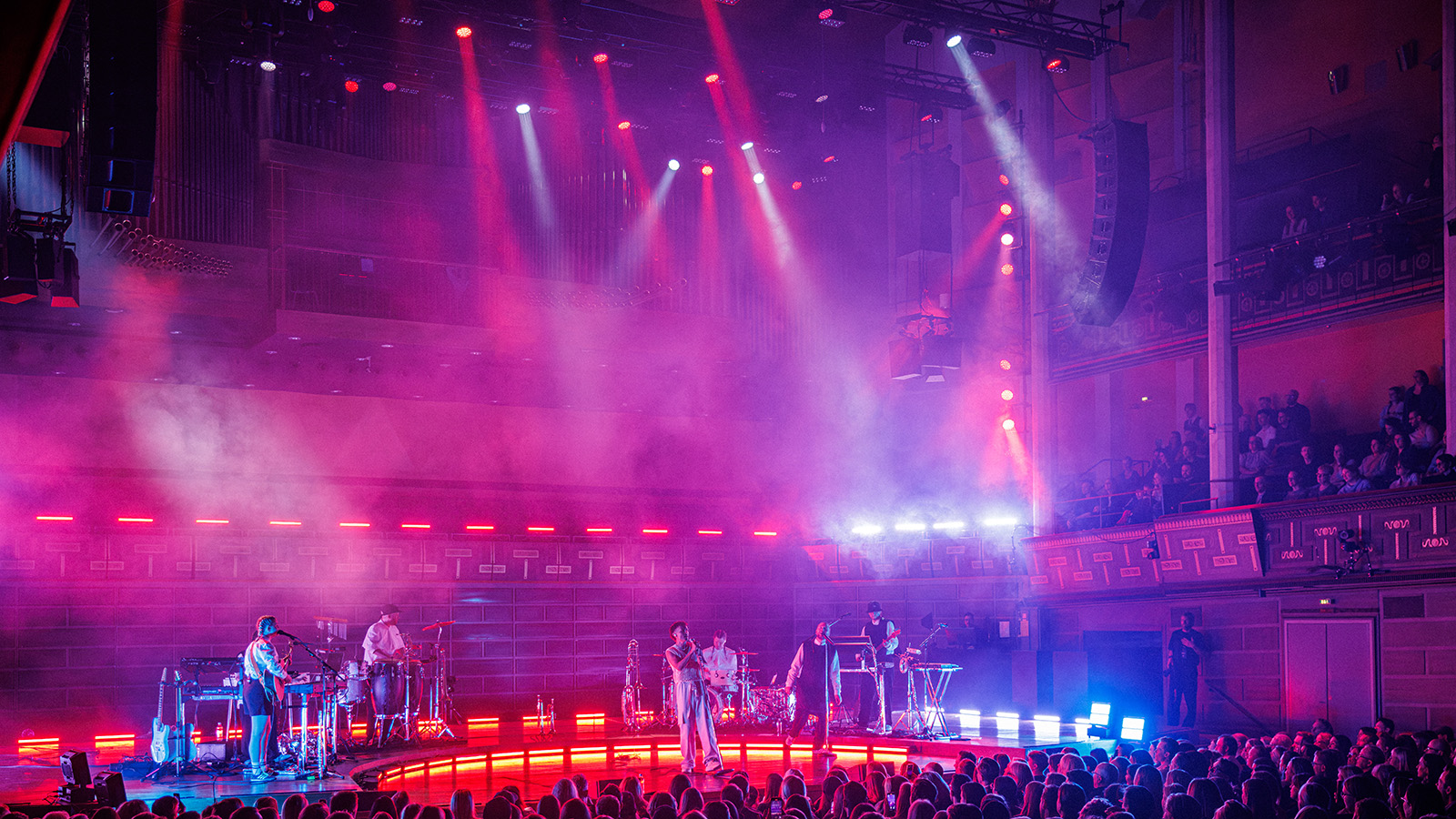LD Jakob Larsson highlights both artist and venue at Stockholm’s iconic Concert Hall
When Kenyan-Swedish singer and fashion designer Daniel Adams-Ray set out to commemorate his 20 years in the business, the venue selected to host the celebration was the iconic Stockholm Concert Hall (Konserthuset). Here he would play the sell-out shows at the 1,770-capacity classical venue, home of the Royal Stockholm Philharmonic Orchestra.
Lighting the artist’s shows for the past 14 years has been the equally creative, and highly experienced, LD Jakob Larsson, of Light It Production – with GLP’s flexible LED tools, and in particular the JDC family of hybrid strobes, regularly a feature of his toolkit.
By deploying 68 of GLP’s JDC Line 500 in the Main Hall – supported with a handful of the new JDC2 IP – he was able to take a deliberately nuanced approach which would promote both the building’s famous neoclassical architecture as much as the artist onstage.
Other than the existing house lighting, the GLP pieces exclusively did all the heavy lifting – although the designer admits with a smile that commandeering the JDC2 IP was something of a happy accident. “I first saw them in Frankfurt, and they are just so powerful,” he says. “When I spoke to Magnus [Jansson at rental company Woodlite Sweden] he told me he still had four remaining pieces of JDC2 which were not being sent to the Eurovision Song Contest, so he offered them to me to try them out. I placed two on each side as a cross light for the singer and the band, using them more as a wash, but also as a strobe effect.
“As for the JDC Line 500, I wanted to have lights that didn’t get in the way of the venue.” By this he was respecting a multi-tiered venue, accustomed to hosting the annual Nobel Prize Award Ceremony and the Polar Music Prize.
Incoming production only has the facility to use the existing house rear truss, generally for hanging a backdrop. “Whereas we normally use a lot of scenic design on tour, this time we needed to let the room be the scenic design – otherwise why be in such a cool venue?” Larsson continues. “Although we didn’t want to use an orchestra we wanted to present the show in as classic a way as possible, and feel like we were using the orchestra without having them onstage.
“Therefore, my plan was to hide as much light as possible and outline the venue more. We put a lot of JDC Lines on the floor and on the railing where the choir normally stands.” To simulate the real thing, the concert opened to the sound of an orchestra tuning its instruments, and then the whole band arrived and did the same, the artist then shaking an imaginary conductor’s hand. To the normal six-piece band was added three horns, while three songs were performed on the magnificent house organ. The ensemble was completed by the 30-piece choir.
Woodlite Sweden had been persuaded to invest in the JDC Lines by the designer, “as they suggested themselves to this project from the start.” Explaining, Larsson says, “It is clear that this artist was made for the JDC family because he has both very slow pop songs and very dramatic material, so whether you just want an eye candy effect, a powerful wash or the strobe function, it’s all there. The fixture is so powerful it was hard to know when to go full out.
“This product was perfect for slowly being able to build the drama over the two-hour set, adding things such as the strobes.
The set also maximised on video, with two front projectors and cameras, and two power drops on the house truss – one gauze downstage and a regular black backdrop upstage on the same truss. With the choir concealed behind the gauze, Jakob Larsson used the JDC Line to back light them through the gauze, while set out front of the choir was another row of 26 JDC Line which came into play once the gauze was released, so that the whole venue suddenly came into view.
“In total there were four rows of JDC Line 500 because we also used the semi-circular hydraulic stage, and with Daniel standing at ground level where the conductor would normally stand we raised the stage 25cm [to mimic the typical position of the orchestra],” Larsson explains. “I put one row of 16 JDC Lines in the half circle at ground level and with ten heads cross firing over the band. Another line was upstage on the hydraulic stage itself and the last line of JDC Lines was on the railing by the choir.”
The designer often had the fixtures backed off and was never tempted to run them in full pixel programming mode. “Since I first started using JDC1, I have found a way where I can use them effectively at low level, without using so many DMX channels,” he says. Instead, he ran the JDC Lines in 38 channel mode (DMX Mode 7: MultiPix Quadpix): “This gave me all that I needed. I could still do some single pixel mapping but with the effect already in the light.”
In conclusion he says the JDC Lines had more than delivered the expectation: “They are just so powerful, especially for this kind of music where there are a lot of hits on the drums.”
Summing up the dynamic between artist and designer, he adds, “Of the artists I work with, it’s Daniel who cares most about how a show looks – but he also trusts me 100%, and it’s very rare he says no to my ideas.”
With the three anniversary shows over, production is immediately back in rehearsal in preparation for the summer dates, which will feature a completely different touring design.





